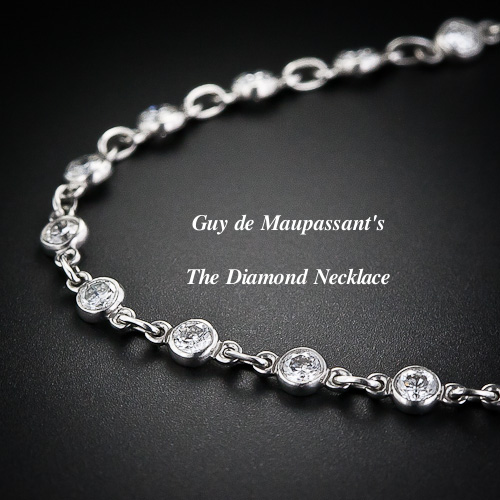- Written by Hemadarshini ENG
- Hits: 3058
2011 I SEM- BE Curriculum and Syllabus
2011 Batch - Anna University, Chennai
Curriculum and Syllabus - Common to all branches
HS2111 TECHNICAL ENGLISH – I
AIM:
To encourage students to actively involve in participative learning of English and to help them acquire Communication Skills.
OBJECTIVES:
1. To help students develop listening skills for academic and professional purposes.
2. To help students acquire the ability to speak effectively in English in real-life situations.
3. To inculcate reading habit and to develop effective reading skills.
4. To help students improve their active and passive vocabulary.
5. To familiarize students with different rhetorical functions of scientific English.
6. To enable students write letters and reports effectively in formal and business situations.
UNIT I
General Vocabulary - changing words from one form to another - Adjectives, comparative adjectives – Adverbs - Active and passive voice – Tenses - simple present, present continuous - Adverb forms – Nouns – compound nouns - Skimming and scanning - Listening and transfer of information – bar chart, flowchart - Paragraph writing, description – Discussing as a group and making an oral report on the points discussed, conversation techniques - convincing others.
UNIT II
Vocabulary – prefixes & suffixes – simple past tense - Spelling and punctuation – ‘wh’ Question forms - Scanning, inference - Listening & note-taking - Paragraph writing - comparison and contrast - Creative thinking and speaking.
UNIT III
Tenses - simple past, simple future and past perfect - Reading in Context -Listening & note-taking – single line – Definitions – sequencing of sentences – instruction - Persuasive speaking.
UNIT IV
Modal verbs and Probability – Concord subject verb agreement – Correction of errors - Cause and effect expressions – Extended Definition - Speaking about the future plans.
UNIT V
‘If’ conditionals – Gerunds - Intensive reading - Speaking – Presentation of problems & solutions - Itinerary – planning for an industrial visit - Formal Letter writing – Letter to the editor, invititation letter, accepting, declining letter and permission letter.
TEXT BOOK:
1. Department of Humanities & Social Sciences, Anna University, ‘English for Engineers and Technologists’ Combined Edition (Volumes 1 & 2), Chennai: Orient Longman Pvt. Ltd., 2006. Themes 1 – 4 (Resources, Energy, Computer, Transport)
REFERENCES:
1. Meenakshi Raman and Sangeeta Sharma, ‘Technical Communication English skills for Engineers’, Oxford University Press, 2008.
2. Andrea, J. Rutherford, ‘Basic Communication Skills for Technology’, Second Edition, Pearson Education, 2007.
EXTENSIVE READING:
1. A.P.J.Abdul Kalam with Arun Tiwari, ‘Wings of Fire’ An Autobiography, University Press (India) Pvt. Ltd.,1999, 30 Impression 2007.
MA2111 MATHEMATICS – I
UNIT I MATRICES
Characteristic equation – Eigen values and eigen vectors of a real matrix – Properties – Cayley-Hamilton theorem (excluding proof) – Orthogonal transformation of a symmetric matrix to diagonal form – Quadratic form – Reduction of quadratic form to canonical form by orthogonal transformation.
UNIT II THREE DIMENSIONAL ANALYTICAL GEOMETRY
Equation of a sphere – Plane section of a sphere – Tangent Plane – Equation of a cone – Right circular cone – Equation of a cylinder – Right circular cylinder.
UNIT III DIFFERENTIAL CALCULUS
Curvature in Cartesian co-ordinates – Centre and radius of curvature – Circle of curvature – Evolutes – Envelopes – Evolute as envelope of normals.
UNIT IV FUNCTIONS OF SEVERAL VARIABLES
Partial derivatives – Euler’s theorem for homogenous functions – Total derivatives – Differentiation of implicit functions – Jacobians – Taylor’s expansion – Maxima and Minima – Method of Lagrangian multipliers.
UNIT V MULTIPLE INTEGRALS
Double integration – Cartesian and polar coordinates – Change of order of integration – Change of variables between Cartesian and polar coordinates – Triple integration in Cartesian co-ordinates – Area as double integral – Volume as triple integral
TEXT BOOK:
1. Bali N. P and Manish Goyal, “Text book of Engineering Mathematics”, Third edition, Laxmi Publications(p) Ltd.,(2008).
2. Grewal. B.S, “Higher Engineering Mathematics”, 40 Edition, Khanna Publications, Delhi, (2007).
REFERENCES:
1. Ramana B.V, “Higher Engineering Mathematics”, Tata McGraw Hill Publishing Company, New Delhi, (2007).
2. Glyn James, “Advanced Engineering Mathematics”, 7 Edition, Pearson Education, (2007).
3. Jain R.K and Iyengar S.R.K,” Advanced Engineering Mathematics”, 3 Edition, Narosa Publishing House Pvt. Ltd., (2007).
PH2111 ENGINEERING PHYSICS – I
UNIT I ULTRASONICS
Introduction – Production – magnetostriction effect - magnetostriction generator-piezoelectric effect - piezoelectric generator- Detection of ultrasonic waves properties –Cavitations - Velocity measurement – acoustic grating - Industrial applications – drilling,welding, soldering and cleaning – SONAR - Non Destructive Testing – pulse echosystem through transmission and reflection modes - A,B and C –scan displays, Medicalapplications - Sonograms
UNIT II LASERS
Introduction – Principle of Spontaneous emission and stimulated emission. Population inversion, pumping. Einsteins A and B coeffcients - derivation. Types of lasers – He-Ne, CO Nd-YAG, Semiconductor lasers (homojunction & heterojunction) Qualitative 2 , Industrial Applications - Lasers in welding, heat treatment, cutting – Medical applications - Holography (construction & reconstruction).
UNIT III FIBER OPTICS & APPLICATIONS
Principle and propagation of light in optical fibres – Numerical aperture and Acceptance angle - Types of optical fibres (material, refractive index, mode) – Double crucible technique of fibre drawing - Splicing, Loss in optical fibre – attenuation, dispersion, bending - Fibre optical communication system (Block diagram) - Light sources - Detectors - Fibre optic sensors – temperature & displacement - Endoscope.
UNIT IV QUANTUM PHYSICS
Black body radiation – Planck’s theory (derivation) – Deduction of Wien’s displacement law and Rayleigh – Jeans’ Law from Planck’s theory – Compton effect. Theory and experimental verification – Matter waves – Schrödinger’s wave equation – Time independent and time dependent equations – Physical significance of wave function – Particle in a one dimensional box - Electron microscope - Scanning electron microscope - Transmission electron microscope.
UNIT V CRYSTAL PHYSICS
Lattice – Unit cell – Bravais lattice – Lattice planes – Miller indices – d spacing in cubic lattice – Calculation of number of atoms per unit cell – Atomic radius – Coordination number – Packing factor for SC, BCC, FCC and HCP structures – NaCl, ZnS, diamond and graphite structures – Polymorphism and allotropy - Crystal defects – point, line and surface defects- Burger vector.
TEXT BOOKS:
1. R. K. Gaur and S.C. Gupta, ‘Engineering Physics’ Dhanpat Rai Publications, New Delhi(2003)
2. M.N. Avadhanulu and PG Kshirsagar, ‘A Text book of Engineering Physics’,S.Chand and company, Ltd., New Delhi, 2005.
REFERENCES:
1. Serway and Jewett, ‘Physics for Scientists and Engineers with Modern Physics’, 6 Edition, Thomson Brooks/Cole, Indian reprint (2007)
2. Rajendran, V and Marikani A, ‘Engineering Physics’ Tata McGraw Hill Publications Ltd, III Edition, New Delhi, (2004).
3. Palanisamy, P.K., ‘Engineering Physics’ Scitech publications, Chennai, (2007).
4. Jayakumar. S, ‘Engineering Physics’, R.K. Publishers, Coimbatore, (2003).
5. Chitra Shadrach and Sivakumar Vadivelu, ‘Engineering Physics’, Pearson Education,
New Delhi, (2007).
CY2111 ENGINEERING CHEMISTRY – I
AIM:
To impart a sound knowledge on the principles of chemistry involving the different
application oriented topics required for all engineering branches.
OBJECTIVES:
• The student should be conversant with the principles water characterization and treatment of potable and industrial purposes.
• Principles of polymer chemistry and engineering applications of polymers
• Industrial applications of surface chemistry
• Conventional and non-conventional energy sources and energy storage devices and Chemistry of engineering materials
UNIT I WATER TECHNOLOGY
Characteristics – alkalinity – types of alkalinity and determination – hardness – types and estimation by EDTA method (problems); Domestic water treatment – disinfection methods (Chlorination, ozonation. UV treatment) – Boiler feed water – requirements – disadvantages of using hard water in boilers – internal conditioning (phosphate, calgon and carbonate conditioning methods) – external conditioning – demineralization process – desalination and reverse osmosis.
UNIT II POLYMERS AND COMPOSITES
Polymers-definition – polymerization – types – addition and condensation polymerization – free radical polymerization mechanism – Plastics, classification – preparation, properties and uses of PVC, Teflon, polycarbonate, polyurethane, nylon-6,6, PET- Rubber -vulcanization of rubber, synthetic rubbers – buty1 rubber, SBR, Composites – definition, types polymer matrix composites – FRP only.
UNIT III SURFACE CHEMISTRY
Adsorption – types – adsorption of gases on solids – adsorption isotherms – Frendlich and Langmuir isotherms – adsorption of solutes from solution – role of adsorbents in catalysis, ion-exchange adsorption and pollution abatement.
UNIT IV NON-CONVENTIONAL ENERGY SOURCES AND STORAGE DEVICES
Nuclear energy – fission and fusion reactions and light water nuclear reactor for power generation (block diagram only) – breeder reactor – solar energy conversion – solar cells– wind energy – fuel cells – hydrogen – oxygen fuel cell – batteries – alkaline batteries – lead–acid, nickel–cadmium and lithium batteries.
UNIT V ENGINEERING MATERIALS
Refractories – classification – acidic, basic and neutral refractories – properties(refractoriness, refractoriness under load, dimensional stability, porosity, thermal spalling) – manufacture of alumina, magnesite and zirconia bricks, Abrasives – natural and synthetic abrasives – quartz, corundum, emery, garnet, diamond, silicon carbide and boron carbide. Lubricants – mechanism of lubrication, liquid lubricants, - properties – viscosity index, flash and fire points, cloud and pour points, oilyness) – solid lubricants – graphite and molybdenum sulphide. Nanomaterials – introduction to nanochemistry – carbon nanotubes and their applications
TEXT BOOKS:
1. P.C.Jain and Monica Jain, “Engineering Chemistry” Dhanpat Rai Pub, Co., New Delhi (2002).
2. S.S. Dara “A text book of engineering chemistry” S.Chand & Co.Ltd., New Delhi(2006).
REFERENCES:
1. B.K.Sharma “Engineering chemistry” Krishna Prakasan Media (P) Ltd., Meerut (2001).
2. B. Sivasankar “Engineering Chemistry” Tata McGraw-Hill Pub.Co.Ltd, New Delhi (2008).
GE2111 ENGINEERING GRAPHICS
AIM:
To develop graphic skills in students.
OBJECTIVES:
To develop in students graphic skill for communication of concepts, ideas and design of engineering products and expose them to existing national standards related to technical drawings.
UNIT I PLANE CURVES AND FREE HAND SKETCHING
Curves used in engineering practices:
Conics – Construction of ellipse, Parabola and hyperbola by eccentricity method –Construction of cycloid – construction of involutes of squad and circle – Drawing of tangents and normal to the above curves.
Free hand sketching:
Representation of Three Dimensional objects – General principles of orthographic projection – Need for importance of multiple views and their placement – First angle projection – layout views – Developing visualization skills through free hand sketching of multiple views from pictorial views of objects.
UNIT II PROJECTION OF POINTS, LINES AND PLANE SURFACES
Projection of points and straight lines located in the first quadrant – Determination of true lengths and true inclinations – Projection of polygonal surface and circular lamina inclined to both reference planes.
UNIT III PROJECTION OF SOLIDS
Projection of simple solids like prisms, pyramids, cylinder and cone when the axis is inclined to one reference plane by change of position method.
UNIT IV SECTION OF SOLIDS AND DEVELOPMENT OF SURFACES
Sectioning of above solids in simple vertical position by cutting planes inclined to one reference plane and perpendicular to the other – Obtaining true shape of section. Development of lateral surfaces of simple and truncated solids – Prisms, pyramids, cylinders and cones – Development of lateral surfaces of solids with cylindrical cutouts, perpendicular to the axis.
UNIT V ISOMETRIC AND PERSPECTIVE PROJECTIONS
Principles of isometric projection – isometric scale – isometric projections of simple solids, truncated prisms, pyramids, cylinders and cones. Perspective projection of prisms, pyramids and cylinders by visual ray method.
TEXT BOOKS:
1. N.D. Bhatt, “Engineering Drawing” Charotar Publishing House, 46 Edition, (2003).
REFERENCES:
1. K. V. Natrajan, “A text book of Engineering Graphics”, Dhanalakshmi Publishers, Chennai (2006).
2. M.S. Kumar, “Engineering Graphics”, D.D. Publications, (2007).
3. K. Venugopal & V. Prabhu Raja, “Engineering Graphics”, New Age International (P) Limited (2008).
4. M.B. Shah and B.C. Rana, “Engineering Drawing”, Pearson Education (2005).
5. K. R. Gopalakrishnana, “Engineering Drawing” (Vol.I&II), Subhas Publications (1998).
6. Dhananjay A.Jolhe, “Engineering Drawing with an introduction to AutoCAD” Tata McGraw Hill Publishing Company Limited (2008).
7. Basant Agarwal and Agarwal C.M., “Engineering Drawing”, Tata McGraw Hill Publishing Company Limited, New Delhi, (2008).


